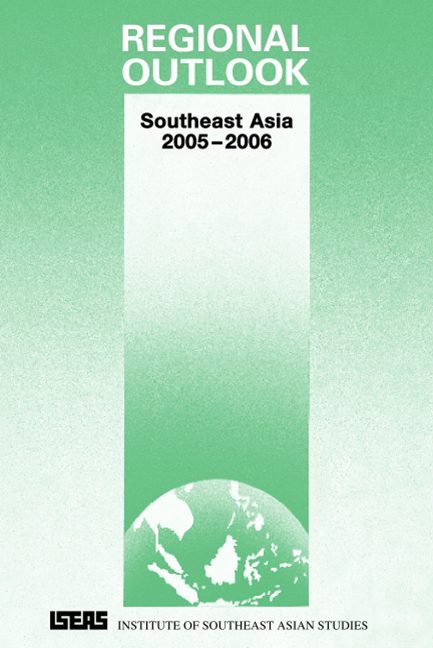The ASEAN-10
from ECONOMIC OUTLOOK
Published online by Cambridge University Press: 21 October 2015
Summary
Brunei
Skyrocketing oil prices, upbeat performances in the manufacturing and service sectors, creation of new jobs, and a strong growth in the Southeast Asian region offers a big boost to the Brunei economy. According to the International Finance Corporation (IFC), for every dollar increase in the price of oil, Brunei can expect to see an additional real GDP growth of US$100 million. A record oil price hike can thus turn the government budget deficit into a surplus. Against this backdrop, the economy is likely to experience 3 to 5 per cent GDP growth in 2005 and 2006.
Traditionally, oil prices have played a crucial role in Brunei's economy, as the oil sector constitutes half of the country's GDP and 90 per cent of its exports. Due to a stronger demand from China and a supply disruption in the Middle East, the sultanate's average weighted oil production increased by 1.2 per cent from 204,803 barrels a day in the first quarter of 2003 to 207,323 barrels a day in the first quarter of 2004. The government is expecting to see a 2 to 3 per cent growth in this sector. The non-oil private sector has posted affirmative growth rates owing to a buoyant performance in the non-oil mining, quarrying, and manufacturing sectors, as well as wholesale and retail sectors.
The sultanate recorded a budget deficit of BND 31.5 million (US$18.5 million) in the first quarter of 2004. During this period the government's expenditure of BND 1.43 billion (US$860 million) exceeded its revenue of BND 1.820 billion. However, the government's fiscal position is expected to turn around from a deficit to a surplus. The government revenue, which, to a large extent is dependent on revenues from the sale of oil and gas, is projected to benefit from the high oil prices. Nevertheless, large government expenditure to support development projects may reduce the surplus.
- Type
- Chapter
- Information
- Regional OutlookSoutheast Asia 2005-2006, pp. 87 - 140Publisher: ISEAS–Yusof Ishak InstitutePrint publication year: 2004



